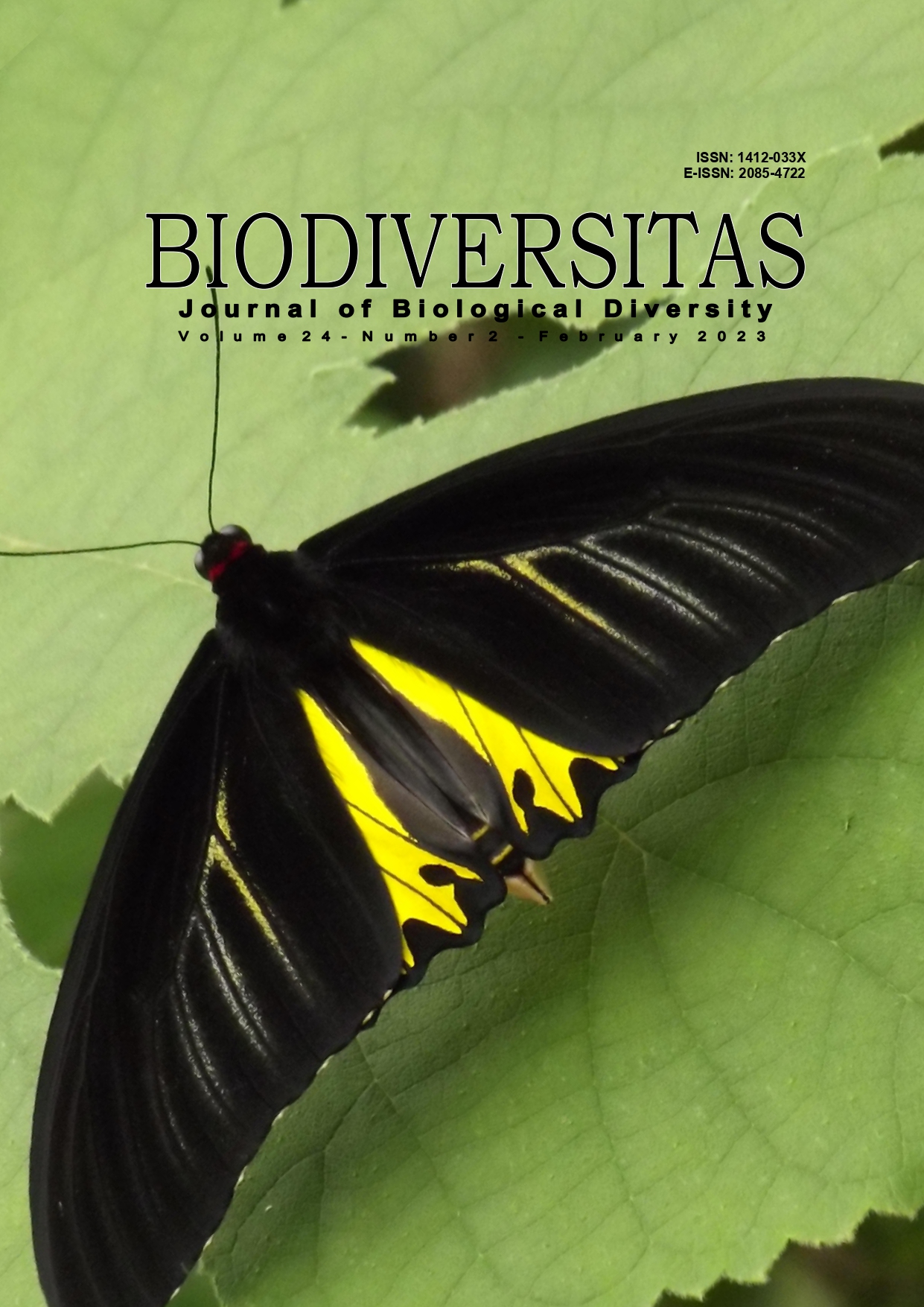The false alarm of experimentally companion plants to the cabbage pests with their ecological effects
##plugins.themes.bootstrap3.article.main##
Abstract
Abstract. Kurnianto AS, Septiadi L, Haryadi NT, Muhlison W, Sucipto I, Dewi N, Tanzil AI, Lestari A, Magvira NL, Handoko RNS. 2023. The false alarm of experimentally companion plants to the cabbage pests with their ecological effects. Biodiversitas 24: 1303-1312. Jember is one of the important horticulture producers in Indonesia. Companion Plants (CP) are promising for effective pest control. This study aims to analyze the abundance of cabbage pests across several local CP and the theoretical ecological interactions between pests and plants. We conducted an experiment with several local CP: Ground Peanut (Arachis hypogaea), Tomato (Solanum lycopersicum), Welsh Onion (Allium fistulosum), and Shallot (Allium cepa) to Cabbage (Brassica oleracea var. capitata) and examining the abundance of cabbage pests (Plutella sp. and Crocidolomia sp.). The results showed that Arachis hypogaea performed as suitable as a CP for cabbage, whereas the other plants (Allium spp.) contradicting attracted more pests. The similarity index based on cabbage pests and abundance clearly demonstrated that A. fistulosum was most similar to the control. PCA shows Plutella sp. was abundantly seen throughout weeks 1-4, and Crocidolomia sp. was seen in abundance during weeks 5 and 6. The patterns between pests' abundance, attack area, and damage intensity showed a similar trend for both Plutella sp. and Crocidolomia sp. In the future, it is essential to evaluate the use of Allium groups as CP for cabbage and VOC interactions between plants and pests.

